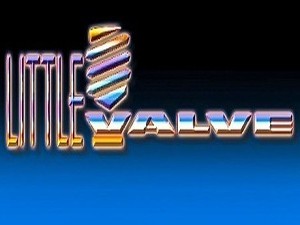
Ask Us
Frequently Asked Questions?
About our LittleValve Water Saving Sprinklers, Sprinkler Parts & Nozzles.
We try to anticipate questions you might have about our PRODUCTS and provide the answers here. If you need additional information send email to littlevalve@valvettesystems.com.
F.A.Q.s
Yes. For contractors, they can be custom-ordered through irrigation distributor outlets in the following models of pop-up sprinklers in case quantities of 4”, 6” and 12”: Toro 570, Rain Bird 1800, and Hunter Pro-Sprays. It will be necessary to contact us first as we coordinate the purchase with your distributor and handle all the details. For Homeowners, please contact us directly and we’ll take care of what you want.
Not really. There is only one smaller than 4″ and that is a Toro 3″ stem.
No, but they are available or can be special-ordered from the irrigation distributors listed under the “Products Catalogue/Contractors Info” tab. Most of the companies listed there do sell retail even though their primary customers are contractors, cities, and apartment/condominium maintenance staff. Most irrigation distributors have a much larger and varied selection than does any retail store.
The white wiper seals for the Little Tuffy pop-ups is 2 years. For everything else we make including the other parts of the Little Tuffys, the warranty is 5 years. The warranty does not protect against any mistreatment of the parts or being damaged by gardeners, being run over by vehicles and etc.
The correct answer is ‘Yes’. However, there are several caveats to consider when asking that question as it is not a ‘cut & dry’ subject.
The subject of matched precipitation rates is only brought up in the context of saving water as the concept of having matched precipitation is supposed to result in just that: saving water by the water being applied more evenly regardless of distance and nozzle size.
However, the MWD trials resulted in average water savings over the year of 30% on typical spray systems with the use of LittleValve sprinkler parts and they do not provide matched precipitation. For each trial, the LittleValve area using only 15′ nozzles was paired against a non-LittleValve area. The non-LittleValve areas used 12-ft MPR nozzles in 12′ wide median strips hence the non-LittleValve areas were installed with matched precipitation in mind. Yet, the LittleValve areas achieved higher water savings without matched precipitation because of several factors: Overspraying was eliminated, misting and fogging was eliminated and the bigger, fatter and heavier water droplets that come from 15′ nozzles penetrated the soil deeper, diffused in the soil wider and were much less affected by wind drift than smaller radius nozzles.
The bottom line is that the benefits of LittleValve parts in conjunction with 15′ nozzles override the singular benefit of matched precipitation.
Another matter in this regard is that matched precipitation in small spray nozzles is very difficult to achieve. Matched precipitation is very important in larger rotors. Without matched precipitation with gear-driven rotors, you will have noticeably uneven watering.
Ratchet rings are always located at the base of the pop-up riser stem. Ratchet rings keep the sprinkler and the nozzle facing the same way every day. When you rotate a stem in an assembled pop-up sprinkler, you will hear and feel a click-click-click. That noise is the notches in the ratchet ring engaging and disengaging with the inner ribs inside the housing. Without ratchet rings, one morning the sprinkler faces east, the next morning, it will face southwest or somewhere.
The answer is the In-stem Flow Regulator (IFR) technology, the biggest change to sprinklers since plastic sprinklers came out in the 1960’s. IFRs provide on/off AND flow control to each sprinkler AND pressure control as well. That means overspray goes away because you dial in your distance using far less nozzles than before. FYI, overspray is the number one reason for runoff. Water-wasting misting/fogging – due to high pressure – also goes away because the LittleValve IFR allows for pressure regulation regardless of the inlet pressure hence, LittleValves are not limited as are ALL other pressure regulating pop-up stems and devices. An important fact with pressure regulating stems is that the apparatus used by all the other manufacturers for pressure regulation goes into the middle of the stem and creates an obstruction, which means that sooner or later, that stem is going to get clogged up with debris that will easily get hung up on the device. When that happens, you buy a new sprinkler or, if you’re smart, you will just buy a LittleValve replacement stem and get the LittleValve out of the deal. But, ONLY with LittleValves, can you get the pressure regulation you need and yet be able to have an unobstructed water passageway that allows all debris smaller than 1/4″ to pass through. BTW, pressure regulating sprinklers by other manufacturers cost substantially more than regular sprinklers. Further, pressure regulation apparatus for above-grade sprinklers is bulky and not really very common and rarely used. With LittleValve parts, you always have your pressure regulation regardless of what part you buy.
Remember: If you’re not using LittleValves, you’re not doing everything you can to save water.
Please note there are many irrigation professionals that will assert that the LittleValve provides pressure compensation, not pressure regulation. We will not argue that point nor even disagree with it. However, the end results practically come out the same, which is primarily to avoid water-wasting misting and fogging. Hence, we consider the point mute. We say “practically” because there is one big difference in the final results: We have found that the spring-loaded pressure regulating devices used by the other manufacturers lose their ability to maintain the desired pressure after 18 months to 2 years. Our pressure regulation does not involve springs nor an
